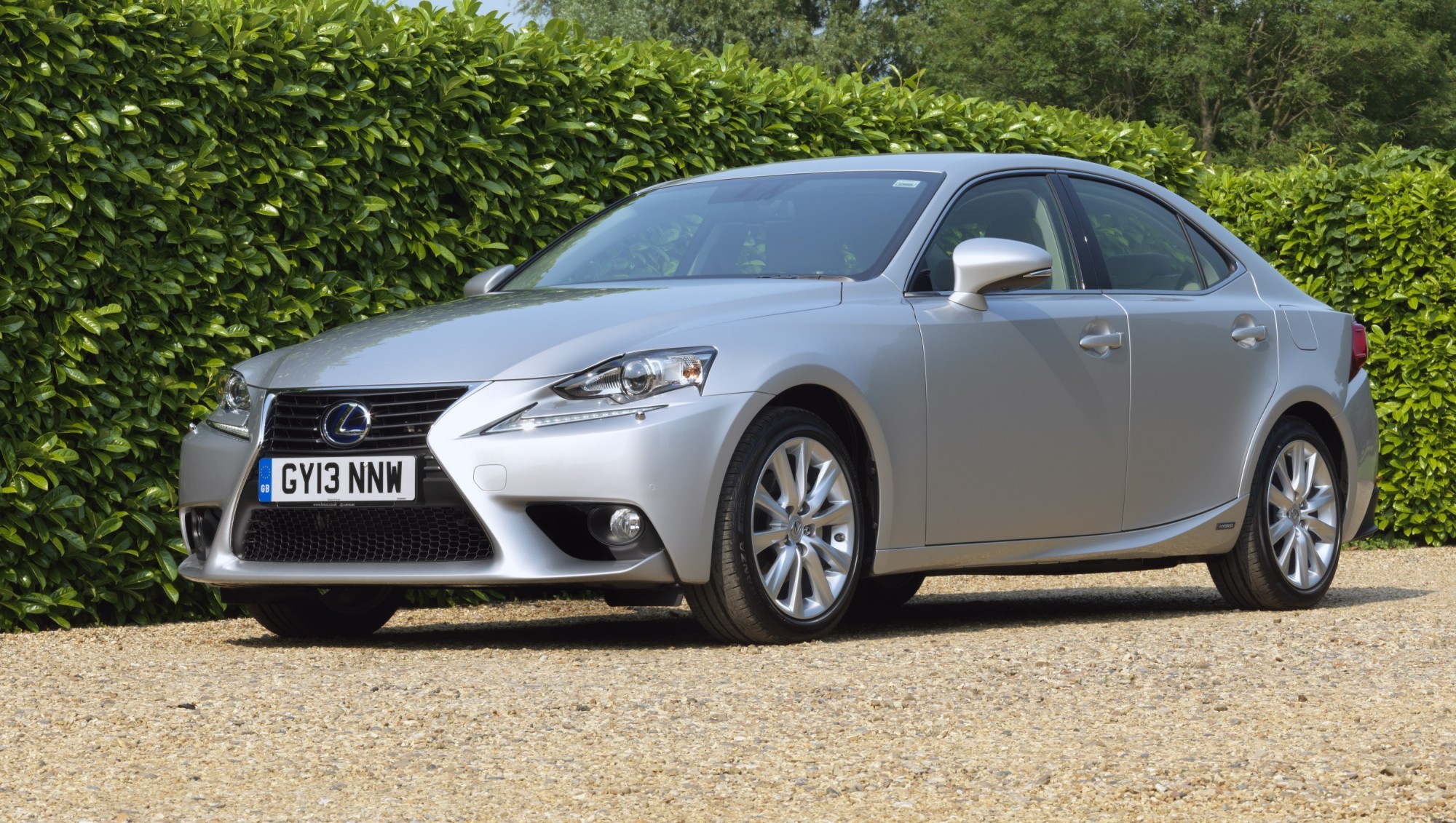Lexus has never been scared of taking on the big German luxury car makers. Its big saloon, the LS, makes a strong case for being the most luxurious car on the planet.
But is Lexus the luxury arm of Toyota biting off more than it can chew by taking on the mighty BMW 3-Series?
The IS compact saloon range starts at £26,495 for the 2.5 litre V6 in SE guise. Unlike its German rivals, Lexus has chosen to push hybrid petrol/electric engines instead of diesel power.
The IS 300h starts at £29,495 for the SE, and the top spec Premium model I drove cost £38,495.
The entry version of the hybrid returns 65.7mpg and emits just 99g/km of CO2, making it exempt from VED payments.
With its bigger wheels, the Premium car’s figures drop to 60.1mpg and 109g/km meaning it only costs £20 a year in VED.
A benefit-in-kind rate of 12% makes it an attractive proposition for company car buyers.
All IS models come with automatic gearboxes six speeds in the petrol versions and continuously variable transmission (CVT) in the hybrids.
This is an excellent unit, which virtually seamlessly blends both power units, bringing the petrol engine into play when it’s needed.
With a combined output of 220bhp, the IS 300h gets from 0-62mph in 8.3 seconds.
It’s fast enough for swift overtaking but the engine, which is faultlessly quiet under gentler use, introduces a very raucous whine when pressed.
Being rear-wheel drive, the Lexus should handle quite tidily. And it does there is plenty of grip but the raucous noise the engine makes at full chatter discourages you from driving hard.
This is most definitely a car for cruising in. For those who like their Lexuses to be a bit more bonkers there is a £58,000 F model with a 5.0 litre, 417bhp V8.
For Scottish buyers, that rear-wheel drive just means their car will slip around more during snowy winters although the 3-Series and Mercedes C-Class are also rear-driven and will have the same issues.
There are three drive modes: Eco, Normal and Sport. I found leaving it in Eco was best. In that mode the car maximises full-electric use, making it more frugal and also quieter.
The Lexus is comfortable, as you’d expect, but the big wheels fitted to the Premium model make a bit of a din and I reckon the smaller wheels on the entry-level car will be improve both ride and refinement.
The inside especially in this top spec version is a place of leather-laced, wood-trimmed opulence. Driver and front passenger have room to sprawl, although leg and head room in the rear is on the tight side. The boot is large at 480 litres.
Most cars supplied to motoring hacks tend to be loaded up with extra kit, sending the price into the stratosphere. But to Lexus’ credit, the only optional extra supplied to this IS300h is £610 metallic paint.
Everything else, from the eight-way electrically adjustable seats with heating and cooling functions, to the rear view camera and 15 speaker Mark Levinson surround sound system comes as standard.
Other treats include auto headlights and wipers; bi-xenon headlights; electric, folding, heated, auto-dimming wing mirrors; leather seats; DVD player; DAB radio, and sat nav.
When you look at the standard kit BMW, Audi and Mercedes give their cars, the Lexus is way out in front.
So should you buy one? Not if you want a car that is fun to drive BMW, Mercedes and Audi have it comprehensively trumped here.
But the Lexus provides a lot of luxury for the money, and reliability/customer satisfaction surveys suggest it is less likely to give you problems than its Germanic rivals.
Price: £38,495
0-62mph: 8.3 seconds
Top speed: 125mph
Fuel economy: 60.1mpg
CO2 emissions: 109g/km
